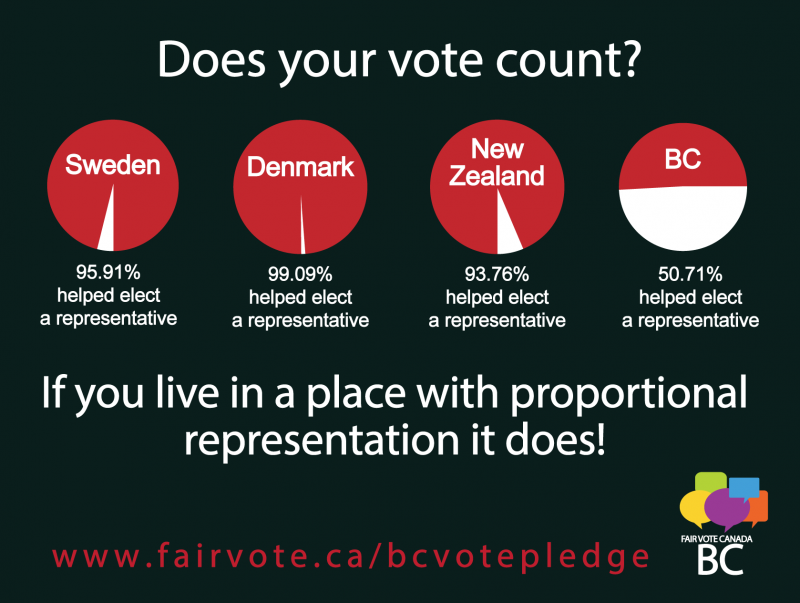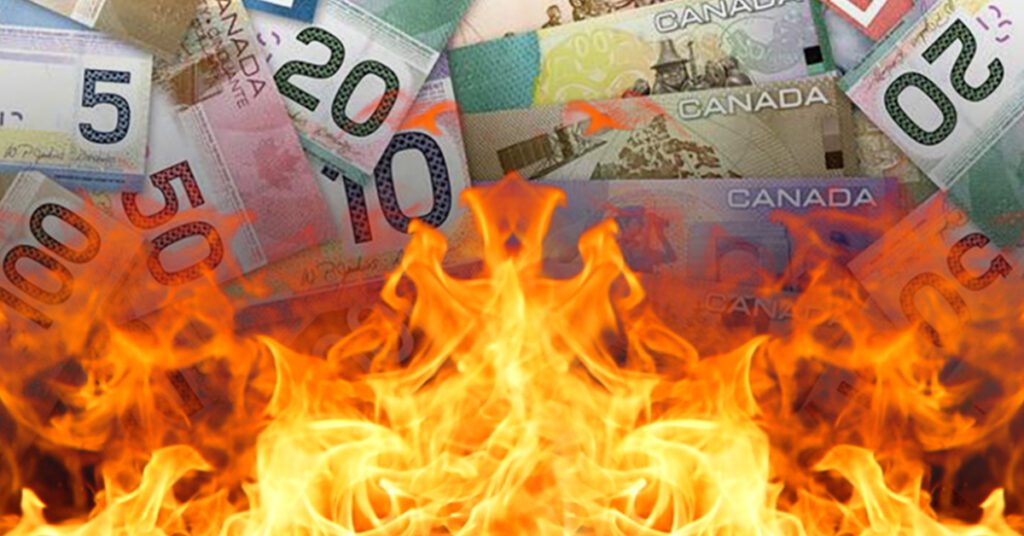I was about 11 when the movie Patton came out in 1970. I thought it was so great that I went to see it three times in the theatre, mainly because of George C. Scott’s performance, but also because of a great script that was co-written by Francis Coppola, and which helped his career and led to his making The Godfather soon after.
After winning a battle in Africa, Scott utters the memorable line: “Rommel, you magnificent bastard. I read your book!”
The line is not based on fact, though no doubt Patton had access to intelligence and knowledge of Rommel’s tactics, but the line is appropriate in so far as it can be a huge advantage to know the strategy and tactics of your enemy or opponent beforehand, if they have been foolish enough to disclose them.
Trump is of course threatening to impose tariffs of up to 25% on Canada. Quite possibly, our government and others can at least delay these tariffs by taking Trump to court in the US, though Trump is also proposing to renegotiate USMCA/CUSMA (previously NAFTA), so likely we will need to fight Trump over trade policy regardless.
Robert Lighthizer held the role of US Trade Representative in the first Trump administration when USMCA was negotiated. Lighthizer is a supporter of tariffs and aggressive trade policies that many would label as protectionist.
Lighthizer wrote a book (released in June 2023) about his trade views and experience entitled No Trade Is Free: Changing Course, Taking on China, and Helping America’s Workers, which I just read. I only became aware of Lighthizer in November, in part because of a review of his book in The Guardian.
I don’t think Lighthizer is a bastard (literally or figuratively). He is hardly magnificent, but his book should be required reading for Canadians interested in our upcoming negotiations with the US. Our government would learn how best to counter the US by preparing a strong strategy and going on offence even before negotiations begin.
In short, we should not give away anything for free. This is Lighthizer’s position in matters of trade. For example, Canada should not volunteer to meet the two percent defense spending target ahead of negotiations. If anything, Canada should be accusing the US of whatever complaints we can muster. Trump might complain about the Canadian border being porous when it comes to people and drugs, but we can make the same claims, and add on the fact that the US should do more to stop the flow of illegal guns into Canada across our southern border.
Lighthizer provides a history of the US based around the idea that the US revolution and the constitution were a reaction to the mercantilist policies of Britain, which wanted to export manufactured goods and import only raw materials, while also limiting US trade with the rest of the world. Here is Lighthizer’s essential view:
“Today, the tide has turned against the argument for unfettered free trade, in no small part because of the changes we made in the Trump administration. More broadly, evidence and experience have shown us that free trade is a unicorn – a figment of the Anglo-American imagination. No one really believes in it outside of countries in the Anglo-American world, and no one practices it. After the lessons of the past couple decades or so, few believe in it even within that world, save for some hard-core ideologues. It is a theory that never worked anywhere.”
This is his critique of the neoliberal free trade approach:

“According to the definitions preferred by these efficiency-minded free traders, the downside of trade for American producers is not evidence against their approach but rather is an unfortunate but necessary side effect. That’s because free trade is always taken as a given, not as an approach to be questioned. Rather than envisioning the type of society desired and then, in light of that conception of the common good, fashioning a trade policy to fit that vision, economists tend to do the opposite: they start from the proposition that free trade should reign and then argue that society should adapt. Most acknowledge that lowering trade barriers causes economic disruption, but very few suggest that the rules of trade should be calibrated to help society better manage those effects. On the right, libertarians deny that these bad effects are a problem, because the benefits of cheap consumer goods for the masses supposedly outweigh the costs, and factory workers, in their view, can be retrained to write computer programs. On the left, progressives promote trade adjustment assistance and other wealth-transfer schemes as a means of smoothing globalization’s rough edges.”
This section is also key:
“…mercantilism and a free market are dramatically different systems, with distinctions that are important to note. Mercantilism is a school of nationalistic political economy that emphasizes the role of government intervention, trade barriers, and export promotion in building a wealthy, powerful state. The term was popularized by Adam Smith, who described the policies of western European colonial powers as a “mercantile system.” Then and now, there are a vast array of tools available for countries seeking to go down this path. Mercantilist governments, for instance, frequently employ import substitution policies that support exports and discourage imports in order to accumulate wealth. They employ tariffs, too, of course, and they limit market access, employ licensing schemes, and use government procurement, subsidies, SOEs, and manipulation of regulation to favor domestic industries over foreign ones.”
The focus of the book, and the main villain, is China, followed closely by the World Trade Organization (WTO). Canada gets less than 77 mentions, Mexico gets 99 mentions in the first 352 pages of 576 (the e-book stops counting at 99), and Japan gets 99 mentions in the first 400 pages. Compare this to China, which gets 99 mentions within the first 101 pages alone.
Lighthizer’s main complaints about Canada in the period from 2017-2021 are to do with dairy marketing, and also our “cultural exception” (which allows Canada to take measures to support and protect its cultural industries, without contravening the terms of the agreement). Lighthizer sees the cultural exception as mainly designed to protect Quebec. While francophones in Quebec are paranoid about the future of their language and culture, having a different language from the Americans means they actually have an automatic trade barrier. It is the rest of the Canada that faces a tougher struggle for ensuring people have access to Canadian content, and don’t need to leave the country to work in the arts or media.
According to Lighthizer, the WTO has consistently ruled against the US and does nothing to address many of the barriers and mercantilist practices that China pursues. He prefers the previous GATT agreement, which did not include China and non-market Communist countries. With GATT, many disputes were settled by negotiation instead of by a panel similar to a court, so GATT essentially let the US use its market size and power to influence results.
The WTO includes things like the “Most Favoured Nation” designation (no country should give special preference to goods and services coming from a particular trading partner) as its highest principal, but also includes provisions like the ability of any country to designate itself as a “developing country” with no requirements. This means that Canada or the US could theoretically self designate as a developing country. Additionally, there are wildly different tariff rates from country to country with no standards. Lighthizer is a believer in “reciprocity”, a term that was used for free trade deals in the past – including what was offered to Canada in 1911, but was rejected in a key election.
Agreements like NAFTA/USMCA are allowed under the WTO, and Lighthizer actually praises the USMCA as a model deal, but argues that Europeans and others are abusing the concept. Here is a key point, and is one of the quotes in the book where he notes that the US might be guilty of doing the same:
“In some cases, such as USMCA, perhaps contiguous countries are actually moving toward a unified market, but in many others these deals are just a ruse to get preferential treatment for certain exporters. As in many of these scams, Europe is the lead offender. The European Union has entered into seventy-two such agreements. It is essentially resurrecting the “old colonial preferences” of a bygone era – something, by the way, that was harshly condemned at the time. When trading with Europe, the United States gets worse treatment than at least seventy-two other countries, even though we are their biggest market and the victim of their biggest surplus. China is another big offender. Its Regional Comprehensive Economic Partnership is a group of twelve countries that likewise ignore the MFN obligation. Thus, China also gives preferences to many other countries, even though the United States is its biggest customer. Of course, the United States has some twenty such agreements. With the exception of USMCA, they can be equally criticized.”
Speaking of USMCA, Lighthizer naturally sees the deal as a big victory, and he points out two key gains for the US that highlight why it was really a defeat for Canada. First, Canada cannot enter into trade deals with non-market countries like China, without the permission of the US, which of course makes it harder to diversify our trade if the US starts treating us unfairly. Secondly, USMCA effectively gets renegotiated every six years with the threat of cancellation (cancellation is not immediate, but takes place ten years after it is triggered). This means that Canada ends up having to make concessions every five years, since we are more reliant on the deal than the US, and have less negotiating power.
Here is Lighthizer crowing about USMCA:
“But we also went a step further by proposing language that would make it more difficult for our trading partners to enter into new trade agreements with non-market economies such as China. The idea of a Canada-China free trade agreement seems fanciful now in the aftermath of China having held hostage two Canadian citizens -Michael Spavor and Michael Kovrig- for a period of nearly three years in order to pressure Canada to release a Huawei executive detained in Vancouver while she awaited possible extradition to face US criminal charges. But early in the Trump administration, Canada’s prime minister, Justin Trudeau, cozied up to Beijing and openly flirted with the notion of an FTA with China. This would have completely changed the relationship between the United States and Canada, by both squeezing out US market share in Canada and allowing China to piggyback off Canada’s duty-free access to the United States.”
And here, Lighthizer explains the new extension/cancellation rules:
“And if they decide not to extend, a ten-year clock starts ticking, during which time the parties can work out any disagreements that led one or more parties to decide not to extend. That’s a generous amount of time that will prevent market disruptions but still force politicians to make difficult decisions and resist the temptation to defer maintenance on the agreement indefinitely. If the United States had insisted on a sunset provision in prior trade agreements, including NAFTA and China’s WTO-accession protocol, both the United States and the global trading system would be much stronger today.”
Of course, Lighthizer sees things through an American lens, but is sometimes hypocritical in complaining about other countries being protectionist while himself arguing for US protectionism, particularly when it comes to wanting jobs or manufacturing to be in the US out of national security interests. He is someone who likes the US having the power to bully other countries because of the leverage it derives from its massive market.
This is an interesting passage where he considers the issue of carbon emissions being shifted to other countries as essentially a form of subsidy, then immediately calls on the US to have subsidies when it is in the interests of the US (and would harm Canada):
“One example of this idea is working its way through Congress right now. Many members would like us to have a carbon border adjustment fee put on imports. I agree. If a product is produced in another country by using much more carbon than we would tolerate here, why should that import have a price advantage in our market over a US product that is made producing much less carbon? Such a fee would help clean the global environment and create jobs in America.
Fourth, the United States needs to continue to improve its policy of subsidizing specific crucial industries. As a general matter, industrial subsidies are not a good idea. They add to inefficiency in the market and often lead to the misallocation of resources because of political considerations that are not always consistent with what is best for the people. But in some areas, we cannot compete without subsidizing. There are some economic competitions that the United States cannot afford to lose. We have already addressed the Made in China 2025 program. Every one of the ten areas covered by that program is crucial for the future of any global economy. The United States cannot afford, for example, to lose the competition for artificial intelligence, robotics, advanced materials, and other industries of the future.”
Lighthizer also calls on the US to regain or repatriate manufacturing of carbon chips, a policy that has since been passed under Biden in the CHIPS Act, in the name of national security:
In the 1990s, many influential pundits and writers were predicting that in the future, manufacturing would not be that important. They argued that the loss of manufacturing jobs to poorer countries should be tolerated. Robert Reich predicted that the best jobs could be described as “symbolic analysts”. Now, the irony is that AI might actually make many such jobs redundant. Lighthizer is a strong believer in the importance of keeping manufacturing jobs in the US, as this drives innovation and productivity as well as being important for the US to be self sufficient for national security reasons.
One strange viewpoint Lighthizer has is that European (and British) “value added” VAT taxes are themselves improper and constitute an unfair advantage. Of course, the US has no national sales tax, though many states do have their own sales taxes. He never mentions Canada’s GST/HST taxes, which is odd, since it is essentially a VAT under another name. VATs essentially are a tax on consumption that are meant to apply equally to goods and services both foreign and domestically produced, while not including the tax on exports. As far as I know, nothing is stopping the US from having a national VAT like Canada, and then reducing other taxes or using the money to fund programs like Social Security or health care.
Much of what Donald Trump says is bluster or not based on facts, but as of late he has been stating that US trade deficits, including its trade deficit with Canada, are “subsidies”, almost as if it were foreign aid and the US was getting nothing in return. Economists and others have pointed out this conceptual error, and while Lighthizer doesn’t make the same mistake, his ideas on trade and the trade deficits are not based on solid economics or any intellectual footing about how trade deficits occur.
Economists and experts refer to the “Balance of Payments”, which in effect means that the flow of money in and out of a country have to balance out. The US dollar, of course, is really the dominant “Reserve Currency”, so of course central banks hold some US dollars, and some countries like Panama even use the US dollar instead of having their own currency. And of course, US bills are used in the black market or as a replacement for local currencies where the local currency is unreliable or prone to hyperinflation.
So, if a country imports more goods than it exports, then it has an overall trade deficit, though country by country it might have either surpluses or deficits that add up to the total Balance of Payments number. There is also trade in services, and Lighthizer does note that the US has a services surplus, though this is much smaller than its trade deficit. But generally, Lighthizer makes the error of ignoring all the other flows of money in and out of the US and assuming that the trade deficit is independent of everything else.
Lighthizer wants “balanced trade, by which he means no trade deficit with each country he mentions and likely no trade deficit with any country (so in effect, it doesn’t matter to him that Canada also usually runs overall trade deficits). He complains that because of the trade deficit, the US is in effect selling off its assets to balance the payments. He notes that some economists see such foreign investment as a good sign when they shouldn’t. As a Canadian economic nationalist, I actually agree with this viewpoint of Lighthizer’s when it comes to our own country having had too much foreign investment and foreign control of our economy.
Lighthizer states:
“The real problem with this line of economic analysis is that it assumes that it doesn’t matter who owns the assets of our country. Indeed, these surplus dollars do come back to the United States. But those dollars aren’t purchasing goods and services, they’re purchasing our assets. They come back when foreigners buy US equity, debt, and real estate. When they buy these assets, the new owners get the future earnings of those assets, as well, for all time…
The people in the foreign country who buy our assets own those assets forever, with the obvious effect that they get the profit from those assets year after year. That profit compounds, and the effects of even one year’s trade deficit multiply over time as profits continue.”
Lighthizer offers up three weird proposals: one where importers and exporters would essentially trade vouchers, a second that would limit investments coming into the US (capital controls?), and a third – his own preference – to crank up tariffs until trade is balanced, to essentially crowd out inflows of investment.
What Lighthizer never talks about is the massive deficits of the US federal government. The US debt to GDP ratio peaked in World War Two, dropped to a low point in the 1970s, then has rocketed upward – particularly after the 2008 economic crisis. Lighthizer makes no connection between massive increases in US government debt and the increase in the trade deficit – though there is a graph in the book showing the connection between the trade deficit and when the WTO came into effect in the 1990s.
Japan’s government also runs deficits and has massive debt – of the G7 countries, the US comes in third in debt to GDP ratio, behind only Japan and Italy – but Japan also has incredibly high saving rates.
The US stock market is also attractive because of US multinationals, and even stocks from Germany and Japan being traded in the US (called ADRs). The US is also a safe haven for the world’s richest people. Many poor countries have massive outflows of capital to stable wealthy countries with secure property rights, so this money pours into the US. Additionally, the America First policies under both Trump and Biden mean that while US car companies might be building plants in Mexico, German, Japanese and Korean companies have been investing in the US.
So, even if the US didn’t have a trade deficit, then the other flows of money would have to be in balance too, meaning that Americans would have to be encouraged to save enough to fund the US federal deficit. This likely means much higher interest rates, higher taxes, and/or massively slashing government spending.
I highly recommend Lighthizer’s book because it is important on so many levels. First, it is obviously a guide book to how Trump’s administration will approach trade. Secondly, it provides the keys for Canada to get the best possible results in any negotiations. Lastly, it offers a totally different viewpoint than the neoliberal globalizing approach of free trade deals that Canada has engaged in since the 1970s, which replaced the economic nationalism of the Pearson/Trudeau years, and the Diefenbaker approach of rejecting the continental pull of the US by seeking stronger ties to the UK and other Commonwealth countries.
Canada’s problem is that too many of our politicians, economists, and elites see our country still as a hewer of wood, drawer of water and digger of fossil fuels. Lighthizer’s ideology on trade actually goes back not only to Alexander Hamilton and the US prior to World War One, but to German writer Friedrich List in 1948 – or even John Rae, a Canadian writer who has been unjustly overlooked. Japan, Korea, and China developed along mercantilist principles, as is well explained by Ha Joon Chang in his writings. Lighthizer himself is actually a mercantilist – while the US cannot go to the extremes of what a non-market country like China can do, he does recommend subsidies for key industries.
This passage is essentially an update on Friedrich List or Ha Joon Chang:
“All the great economies were built behind a wall of protection and often with government money. The British industrial revolution was aided by a wall of tariffs. Likewise, the late-nineteenth-century explosion of American industry was the product of protectionism and often subsidies. Can anyone imagine the great American railroads being built without the grant of free land per mile? Similarly, the manufacturing countries of Japan, Germany, and now China all benefited during their development from tariffs, other barriers, and subsidies of one kind or another. It is important to remember that no country became great by consuming. They became great by producing.”
The dominance of globalizing free trade neoliberal economic orthodoxy started in the late 1970s. It has been under threat since the 2008 economic crisis that was largely due to the deregulation of Wall Street under Bill Clinton, and then the rise of right wing populism starting with the Tea Party and followed by Donald Trump.
The Covid pandemic revealed the risks of long supply chains, and now Donald Trump’s threats against Canada and other allies and trade partners of the US show that the opponents of Prime Minister Mulroney’s Free Trade Deal in 1988 were right. Dependence on the US and integration are risky because American internal politics mean the US will put its interests first. The Cold War era and the threat of communism suppressed the natural inclination of the US towards isolationism and bullying nations when it deemed necessary.
Canada needs to adapt to this new reality. Unfortunately, there has so far been little sign of change – though a Globe & Mail op-ed by Jean Chrétien called on Canadians to stop being defensive and go on offense.
Reading Lighthizer’s book is an excellent place to start.
All content on this website is copyrighted, and cannot be republished or reproduced without permission.
Share this article!





Thanks for publishing the Graff piece Donovan.
My take on the 25% tariff thing may be may simplistic, OK. But at out peril we must never forget the mouse fairs poorly in a space with the elephant.
IMO, we, (as in somebody with some grit), must immediately, with white flags waving and piece pipe lit, get along to Washington and get this sorted unless we want to witness, very shortly, the number of Canadians already living pay check to pay check, double!